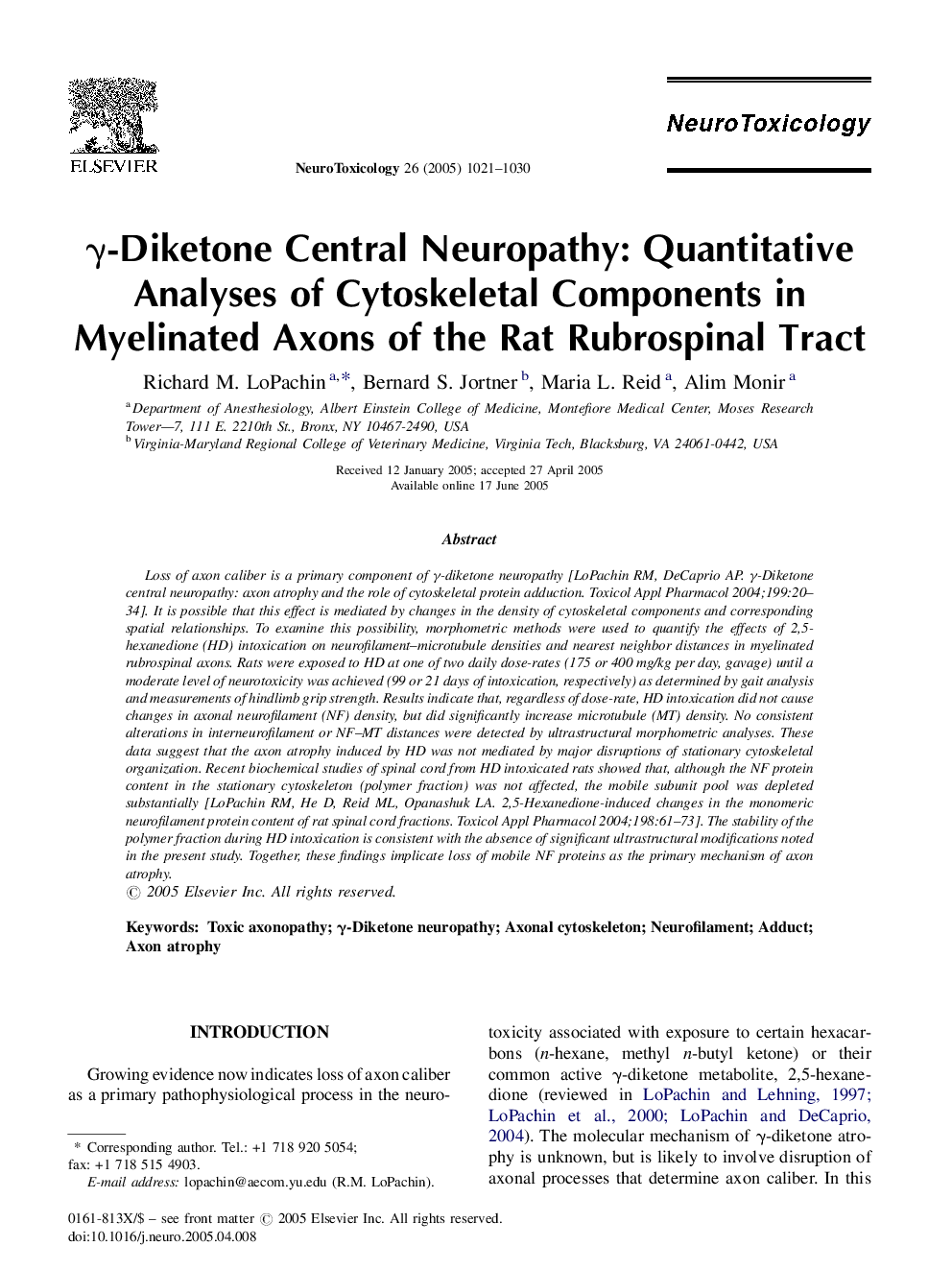| Article ID | Journal | Published Year | Pages | File Type |
|---|---|---|---|---|
| 9032385 | NeuroToxicology | 2005 | 10 Pages |
Abstract
Loss of axon caliber is a primary component of γ-diketone neuropathy [LoPachin RM, DeCaprio AP. γ-Diketone central neuropathy: axon atrophy and the role of cytoskeletal protein adduction. Toxicol Appl Pharmacol 2004;199:20-34]. It is possible that this effect is mediated by changes in the density of cytoskeletal components and corresponding spatial relationships. To examine this possibility, morphometric methods were used to quantify the effects of 2,5-hexanedione (HD) intoxication on neurofilament-microtubule densities and nearest neighbor distances in myelinated rubrospinal axons. Rats were exposed to HD at one of two daily dose-rates (175 or 400 mg/kg per day, gavage) until a moderate level of neurotoxicity was achieved (99 or 21 days of intoxication, respectively) as determined by gait analysis and measurements of hindlimb grip strength. Results indicate that, regardless of dose-rate, HD intoxication did not cause changes in axonal neurofilament (NF) density, but did significantly increase microtubule (MT) density. No consistent alterations in interneurofilament or NF-MT distances were detected by ultrastructural morphometric analyses. These data suggest that the axon atrophy induced by HD was not mediated by major disruptions of stationary cytoskeletal organization. Recent biochemical studies of spinal cord from HD intoxicated rats showed that, although the NF protein content in the stationary cytoskeleton (polymer fraction) was not affected, the mobile subunit pool was depleted substantially [LoPachin RM, He D, Reid ML, Opanashuk LA. 2,5-Hexanedione-induced changes in the monomeric neurofilament protein content of rat spinal cord fractions. Toxicol Appl Pharmacol 2004;198:61-73]. The stability of the polymer fraction during HD intoxication is consistent with the absence of significant ultrastructural modifications noted in the present study. Together, these findings implicate loss of mobile NF proteins as the primary mechanism of axon atrophy.
Related Topics
Life Sciences
Environmental Science
Health, Toxicology and Mutagenesis
Authors
Richard M. LoPachin, Bernard S. Jortner, Maria L. Reid, Alim Monir,
